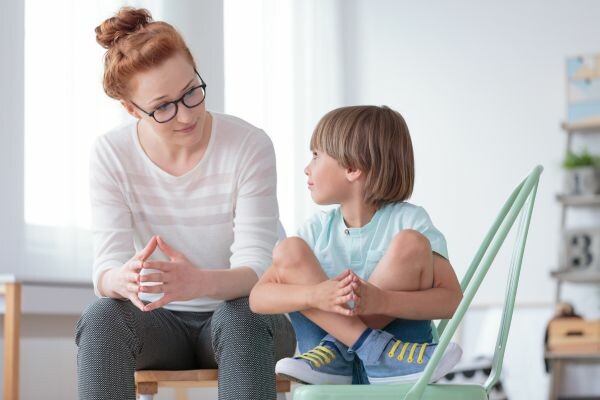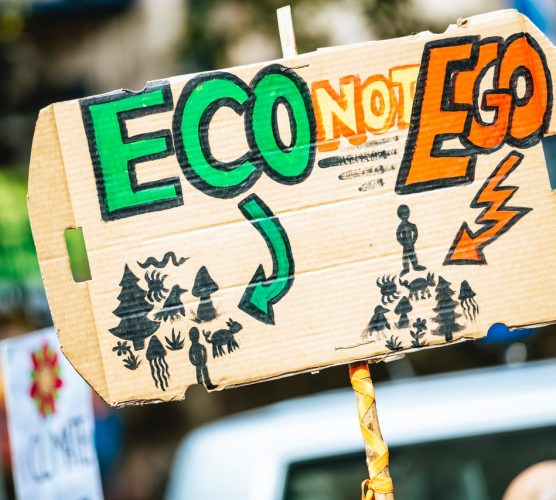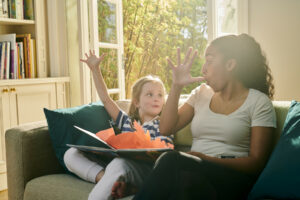
When and Where Should You Start?
Children accept our lifestyles as their norm, so will follow your lead. For toddlers, laying a foundation like this is perhaps the best way to begin. From using less plastic to doing more cycling or walking, to using more public transport, to ensuring children know which bins to use for what, they will learn from your behaviour.
As they get older and their understanding improves, giving context to your decisions helps them to understand what’s what. Why IS a shorter shower better, and what happens to the compost after it goes on the heap?
“Even before a parent ever says the words climate change, they can start introducing many of the underlying concepts”, says Shannon Brescher Shea, who writes about family and sustainable living and who is working on a book called Growing Sustainable Together (North Atlantic Books, due June 2020). “This can include explaining the differences between weather and climate, and ecological concepts like the food web.”
Brescher Shea continues: “Before I started talking to my children about climate change itself, I talked about how we want to produce as little pollution as possible so we could keep the air and water clean and healthy for people and wildlife,” she says.
Reading stories or watching cartoons with green messages paves the way for bigger conversations later. Meanwhile, starting out this way can lead to environmentally aware and active children: some parents told us that their school-age kids are the greenest people in the house. One mum described how her son insists on picking up rubbish on the school run, leaving her with handfuls of aluminium cans to carry home.
Others are assiduous about sorting the rubbish, making sure they take water bottles out of the house or running around the house turning all the lights off (not always helpful if you’re left in a pitch black bathroom, it has to be said!)
How Can You Involve Children In Protests And Civic Action?
But what about if you want to push it further and involve your children in actual protests?
Mary de Mocker, author of The Parents’ Guide to Climate Revolution: 100 Ways to Build a Fossil-Free Future , Raise Empowered Kids, and Still Get a Good Night’s Sleep, has attended and organised many protests, mostly in the US state of Oregon, where she lives.
She advocates taking children along to protests and getting them involved in recognising the systems and have enabled climate change. Understanding the need for systemic and legislative change is eventually going to be more important for children than their ability to make a small difference at home, she suggests.
“There’s a lot of focus on what we should be doing personally, and it’s distracting. People aren’t talking enough about the need to change laws.”
She took her children on protests, informing them about the legislation that was endangering the local and global environment, and offering them the opportunity to help if they wanted.
“We didn’t burden them, but we told them we were fighting people who were making bad laws. We said that there are adults working hard on this and you can join them if you want to.”
Introducing your children to and educating them about how politics and law-making works is exciting for children and builds a sense of empowerment, says de Mocker. She recommends taking them to see how open and accessible democracy should be, describing a recent trip to the offices of Alexandria Ocasio-Cortez and Bernie Sanders in Washington DC.
“There can be civic engagement at any age. Go and visit and make it not a mystery. You can go and see what it [the centre of government] looks like and then go for ice cream.”
How Should You Answer Questions?
If children ask questions about climate change, it’s important to be candid but to ensure they don’t feel responsible for fixing problems on the world’s behalf. Several parents we spoke to said they don’t mention the more frightening prognoses for the planet, focusing instead on positive changes children can make.
The timing of these conversations should come down to a child’s emotional maturity, says Brescher Shea.
“Some experts recommend waiting on these weightier topics until kids are nine or ten, as that’s when they start getting a better sense of time and long-term effects of actions. However, some children may be ready earlier or hear about it earlier and so start asking questions. My kids get worried and frustrated when you don’t answer their questions, so I try to always provide some kind of response.”
Engagement with nature and the origins of resources can also frame the discussion: where does the water in the bathroom come from, or how are some plants and flowers used in place of plastic-packaged cleaning products or toiletries?
Let them feel they can tell you about what they’re learning at school; encourage conversations around the table where they can take the lead. If you disagree, be respectful in debate.
Parents must make sure children know that the climate change challenge is here now, but it isn’t a battle we have already lost.
“You can say ‘yes, it’s bad, but here’s what’s good’ – but we can turn this around. We’re not going to end the climate crisis, but we can radically alter the future,” says de Mocker.
What Can You Do If Your Child Is Afraid?
With demonstrations gathering pace and occupying large spaces in major cities, older children can easily access what could be frightening information, leading to what some psychologists have dubbed eco-anxiety.
In September, the Climate Psychology Alliance (CPA) told The Daily Telegraph it was seeing a rising number of enquiries focused on climate change-related concerns. It is calling for eco-anxiety to be recognised as a psychological phenomenon.
Recent research in Sweden has shown children have three main ways of coping with climate-related stress, Brescher Shea says:
“There’s problem-focused coping where they try to reduce stress by ‘fixing’ the problem; emotion-based coping where they just avoid the stressor, and meaning-focused coping where they try to make personal meaning out of it. Because no one person can ‘fix’ climate change, problem-focused coping alone contributes to negative emotions. Emotion-focused coping reduces stress, but also leads people to not take action. Meaning-focused coping, meanwhile, is associated both with more positive emotions and encouraging people to take action.”
Meaning-focused coping could include getting involved in small community-based projects that improve sustainability, or spending time in nature, she adds.
At a time when children are bombarded with news around climate change whether or not they seek it out, careful management of their social media accounts or media detoxes can reduce worries tied to news reports or coverage of protests.
Resources
When it comes to filling the gaps in your own knowledge, parent-recommended books on climate change and sustainable living including Somebody Swallowed Stanley by Sarah Roberts and Hannah Peck; Clem And Crab by Fiona Lumbers; What A Waste by Jess French, The Lorax by Dr Seuss, and The Green Giant by Katie Cottle.
For children seven and up, The Scoop magazine has published stories relating to climate change.
Children’s TV programmes that have tackled the topic include Peppa Pig (Recycling; S02, E11) and GoJetters’ Great Pacific Garbage Patch episode.
Ørsted produced an e-book and short video that introduces children to the concept of caring for the environment, as well as a database of answers to questions children might ask.
And Remember…
Whatever your thoughts or fears, you simply can’t keep children away from this topic – and nor should you. They, after all, have the true power when it comes to ensuring the future of our planet. The best thing you can do is to inspire them to take the action we have been so remiss ourselves to take.



